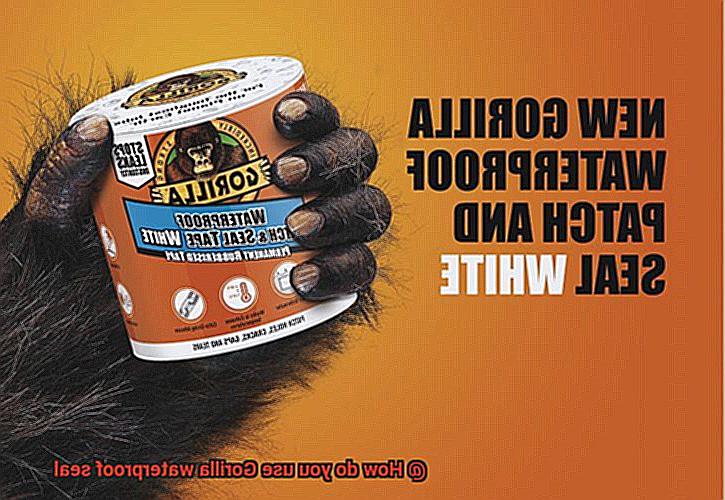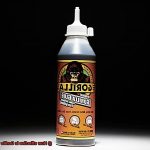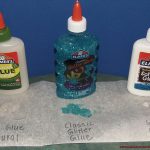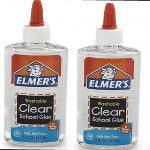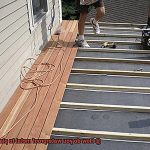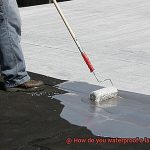Are you tired of dealing with pesky leaks and cracks that seem to pop up out of nowhere? Whether it’s a leaky pipe or a cracked shower tile, these issues can quickly become a nightmare, causing water damage and costly repairs. Luckily, there’s a solution that can save you time, money, and hassle: Gorilla waterproof seal.
Gorilla waterproof seal is an incredibly versatile product that can be used to seal, patch, and repair almost any surface. From fixing leaks in pipes, roofs, gutters, and tanks to repairing cracks and holes in tiles, concrete, and wood – this product has got you covered. It’s strong, flexible, and durable which makes it perfect for both indoor and outdoor applications.
So how do you use Gorilla waterproof seal? The process is simple yet requires some preparation and attention to detail. First things first – clean the surface that needs to be sealed and remove any debris or loose material. Then apply Gorilla waterproof seal evenly and generously using either a brush or dispenser. Make sure to cover the entire area thoroughly and apply several layers if needed. Finally, let the seal dry according to the manufacturer’s instructions.
With Gorilla waterproof seal by your side, you can say goodbye to leaky pipes and cracked tiles once and for all. It’s a reliable and efficient solution that every DIY enthusiast or homeowner should have in their toolkit. So go ahead – tackle those projects with confidence knowing that Gorilla waterproof seal has got your back.
How to Prepare the Surface for Application
Contents
- 1 How to Prepare the Surface for Application
- 2 How to Apply Gorilla Waterproof Seal
- 3 Tips for Securing the Bond
- 4 Curing Time and Environmental Conditions
- 5 Advantages of Using Gorilla Waterproof Seal
- 6 Common Uses of Gorilla Waterproof Seal
- 7 Safety Precautions When Using Gorilla Waterproof Seal
- 8 Troubleshooting Tips for Common Issues with Gorilla Waterproof Seal
- 9 Conclusion
Preparing the surface before applying Gorilla waterproof seal is essential for ensuring a strong and long-lasting bond between the sealant and the surface. To achieve a successful application, follow these five sub-sections:
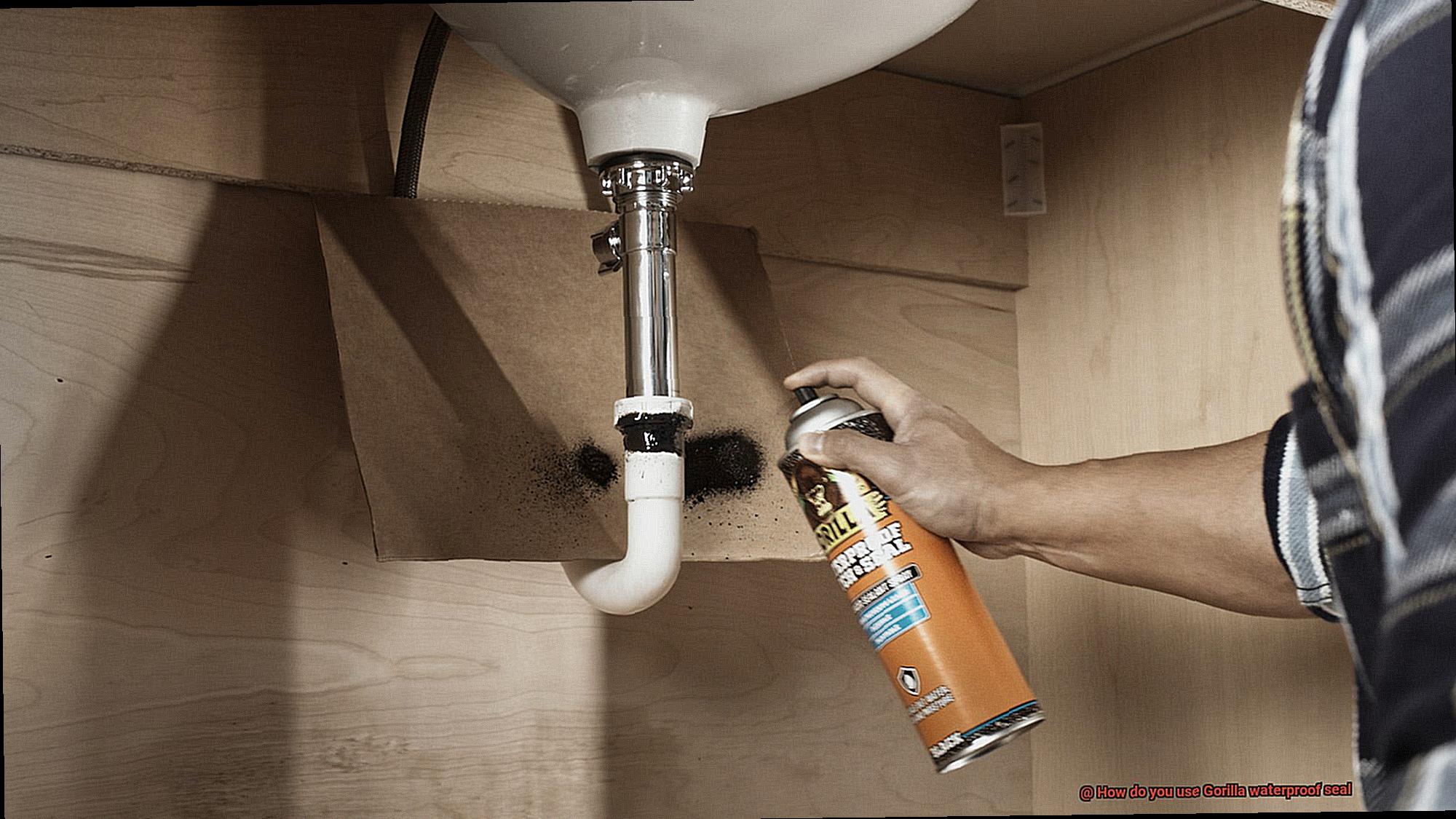
Surface Cleaning
Start by thoroughly cleaning the surface of any dirt, grease, or oil using a cleaning solution. A mild soap solution or rubbing alcohol can be used for this purpose. Rinse the surface with water and let it dry completely.
Surface Sanding
Use sandpaper to roughen up the surface slightly to help the sealant adhere better to the surface. Be careful while sanding, as overdoing it may damage the surface.
Masking
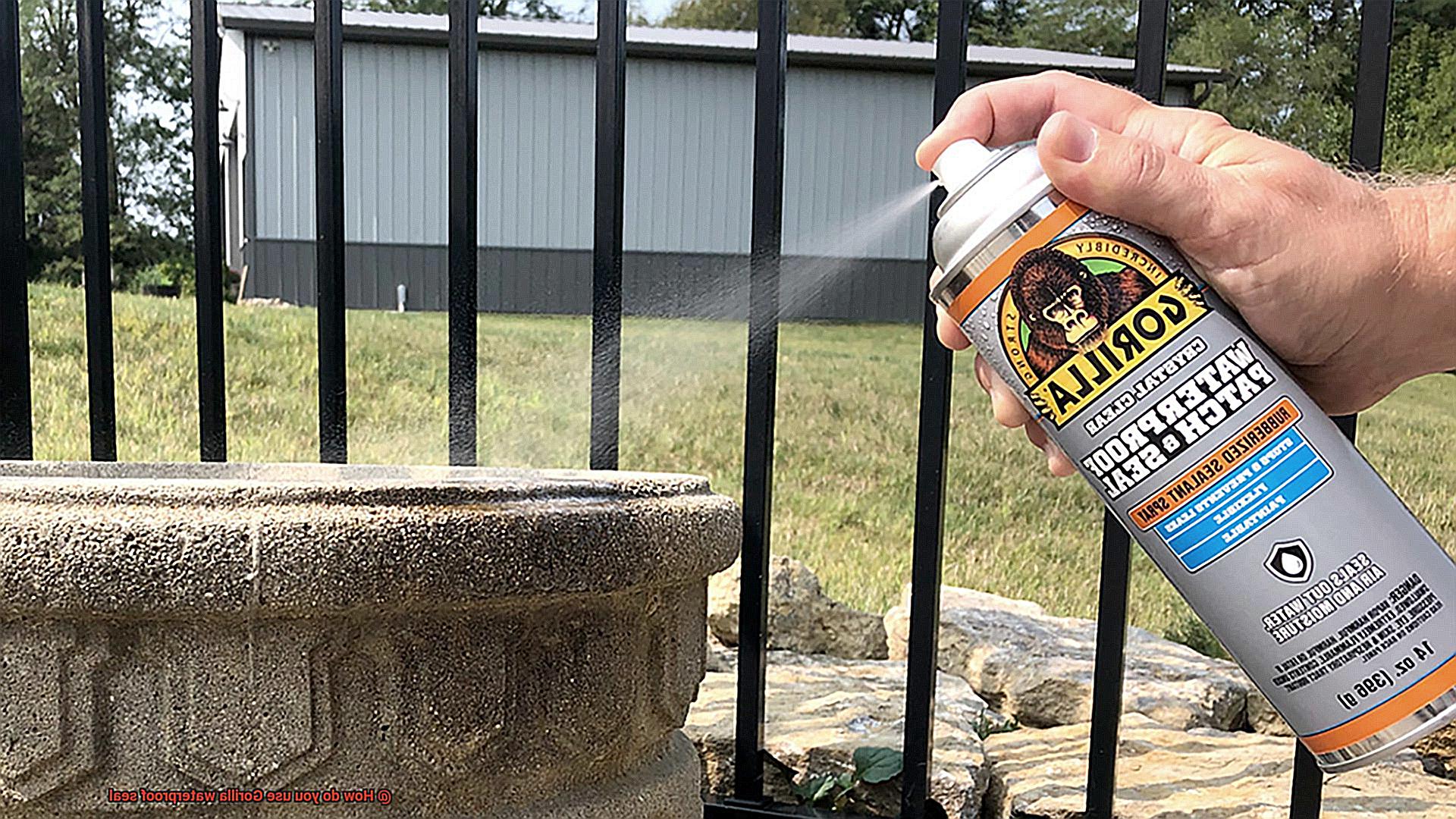
If working on a specific area, mask off the surrounding area with painter’s tape to avoid any accidental application of sealant on unwanted surfaces.
Applying Primer
Some surfaces may need a primer before applying Gorilla waterproof seal. Check the manufacturer’s instructions to see if a primer is required for your specific surface.
Applying Gorilla Waterproof Seal
Once the surface is prepared, apply Gorilla waterproof seal in a continuous bead using a caulking gun or brush. Smooth out the sealant with a putty knife or your finger, making sure it covers the entire area and is evenly spread.
Be sure to let the sealant dry completely before exposing it to water or any other elements. The drying time may vary depending on the temperature and humidity level. By following these steps, you can ensure that your Gorilla waterproof seal application will be effective and long-lasting.
Remember that proper preparation is key to achieving a strong and effective bond between the sealant and the surface.
How to Apply Gorilla Waterproof Seal
Gorilla Waterproof Seal is a powerful solution for sealing leaks and preventing water damage in your home or workplace. While it may seem intimidating at first, applying Gorilla Waterproof Seal is actually quite simple. Here are five key steps to follow for a successful seal.
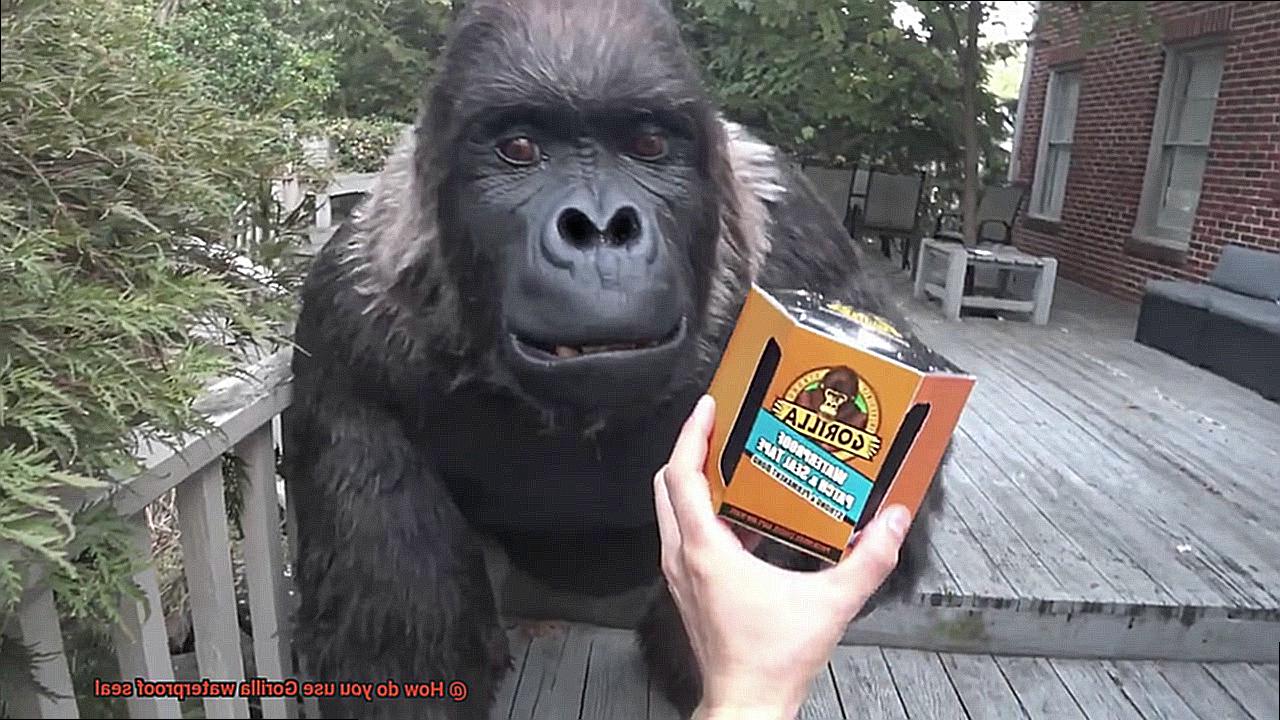
Step 1: Prepare the Surface
Before applying the sealant, it’s important to prepare the surface properly. Start by thoroughly cleaning the area with soap and water or a degreaser. Make sure the surface is completely dry before moving on to the next step.
Step 2: Cut the Nozzle
Gorilla Waterproof Seal comes in a tube format with a nozzle that can be adjusted to fit the width of the area you want to seal. Use scissors to cut open the tip of the nozzle at an angle for best results.
Step 3: Apply the Sealant
Squeeze out a small amount of sealant onto the surface and spread it evenly using a caulk gun or your finger. Make sure to apply enough sealant to cover the entire area you want to seal and form a continuous line without any gaps or bubbles.
Step 4: Smooth Out the Sealant
To ensure a tight bond and prevent air pockets or bubbles from forming, use a putty knife or your finger dipped in water to smooth out the sealant. This will also help create a neat and even finish.
Step 5: Allow Time for Curing
Gorilla Waterproof Seal takes approximately 24 hours to cure fully, so be patient and avoid exposing the sealant to water or other liquids during this period. Once fully cured, your surface will be protected from leaks and water damage for years to come.
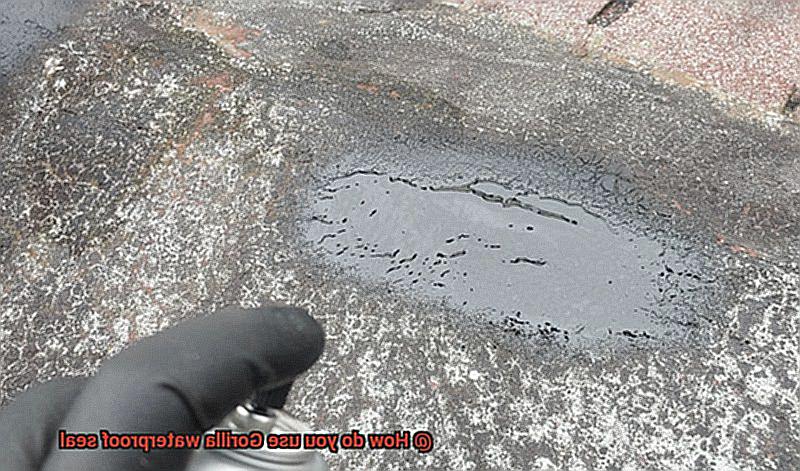
Tips for Securing the Bond
When it comes to securing the bond with Gorilla waterproof seal, there are several crucial steps that must be followed to ensure a reliable and long-lasting bond. In this guide, we will take a closer look at each step to help you achieve the best results.
Clean the surface
The first step in securing the bond is to clean the surface thoroughly. Any dirt, oil, or debris can weaken the bond, so use a cleaning solution and allow it to dry completely before applying the sealant. This step is especially important for surfaces that will be exposed to water or other harsh conditions.
Apply evenly
Once the surface is clean and dry, use a steady hand to apply the Gorilla waterproof seal evenly along the surface. Apply enough sealant to create a strong bond but avoid applying too much as this can affect the strength of the bond. Applying Gorilla waterproof seal in a zigzag pattern also helps increase the surface area of the bond.
Use clamps or weights
For larger surfaces or heavier materials, using clamps or weights can help hold the materials together while the sealant dries. This will prevent any movement or shifting that could weaken the bond. Be sure to leave the clamps or weights in place for at least 24 hours.
Allow time to dry
Gorilla waterproof seal requires time to dry completely before it reaches its maximum strength. Be patient and allow ample time for the sealant to cure before using or exposing it to water. The curing time can vary depending on temperature and humidity, but typically takes between 24-48 hours.
Check for leaks
Once the sealant has dried, check for any leaks or weak spots in the bond. If necessary, apply additional sealant and repeat the process until you have achieved a strong and reliable seal.
Curing Time and Environmental Conditions
As you embark on your next project, it is essential to understand the critical role that curing time and environmental conditions play when using Gorilla waterproof seal. Whether you are a seasoned expert or just starting, these factors can make all the difference in ensuring the success of your project.
Curing time refers to the duration that it takes for the glue to dry and reach its maximum strength. Depending on the type of Gorilla waterproof seal used, curing time typically ranges from 24-72 hours. However, other factors such as temperature, humidity, and the amount of glue used may affect this timeline.
To ensure optimal curing time, it is advisable to use Gorilla waterproof seal in a well-ventilated area with a temperature range of 60-77°F and a relative humidity of 50%. These conditions provide an ideal environment for the glue to cure properly and reach its maximum strength.
Another crucial factor to consider is the surface type. Gorilla waterproof seal bonds well to most surfaces such as wood, metal, ceramic, and plastic. However, before applying the glue, ensure that the surface is clean, dry, and free from dirt, grease, or oil. This will help prevent any weak spots in the bond and ensure maximum adhesion.
Lastly, allow sufficient time for the glue to cure fully before exposing it to water or other environmental conditions. Waiting at least 24 hours before exposing the glued surface to water is advisable. Failure to do so may weaken the bond and reduce its effectiveness.
Advantages of Using Gorilla Waterproof Seal
If you’re in need of a reliable adhesive that can withstand the toughest conditions, look no further than Gorilla Waterproof Seal. This sealant has numerous advantages that make it a top choice for bonding and sealing applications.
For starters, Gorilla Waterproof Seal is specifically designed to be water-resistant. It forms a tight seal that prevents water from seeping through the surface, making it ideal for use in wet areas like bathrooms, kitchens, and even swimming pools. Say goodbye to concerns about water damage around your sinks and bathtubs.
But that’s not all – Gorilla Waterproof Seal is also incredibly durable. It can withstand a wide range of temperatures and has excellent resistance to UV rays, making it suitable for use in both hot and cold climates. Whether you’re dealing with the scorching sun or freezing temperatures, this sealant will stand up to the challenge. Plus, its durability means that you won’t have to worry about replacing or reapplied it anytime soon, saving you time and money in the long run.
What’s more, Gorilla Waterproof Seal is versatile and can be used on a variety of surfaces, including wood, metal, ceramic, and plastic. This makes it an excellent adhesive for all sorts of projects and surfaces. And don’t worry about it ruining the appearance of your project – Gorilla Waterproof Seal dries clear, ensuring a seamless finish every time.
But perhaps best of all, Gorilla Waterproof Seal is incredibly easy to use. Simply apply it directly to the surface using a standard caulking gun, and watch as it spreads evenly without any additional effort required. With a curing time ranging from 24-72 hours, make sure to use this sealant in a well-ventilated area with a temperature range of 60-77°F and relative humidity of 50% to ensure optimal curing time and maximum strength.
Common Uses of Gorilla Waterproof Seal
Look no further than Gorilla Waterproof Seal. This incredibly versatile adhesive can handle even the toughest conditions and is an ideal option for a wide range of applications.
Firstly, Gorilla Waterproof Seal is perfect for plumbing repairs. It can seal leaks in pipes, faucets, and other fixtures while withstanding high water pressure and resisting water and other chemicals. No more dripping faucets or leaky pipes.
Gorilla Waterproof Seal is also excellent for roofing repairs. It can seal gaps and cracks on various roofing materials like asphalt shingles, metal roofs, and rubber membranes. Say goodbye to those pesky roof leaks.
If you’re an automotive enthusiast, you’ll be glad to know that this waterproof seal is also great for repairing vehicles. Use it to seal leaks in radiators, hoses, and other engine parts. Plus, it can repair cracks on windshields and other glass surfaces.
Outdoor projects can also benefit from Gorilla Waterproof Seal. Use it to seal cracks on concrete surfaces such as sidewalks and driveways. It’s also great for repairing leaks in swimming pools, fountains, and ponds. No more wasting time and money on costly repairs.
Last but not least, the waterproof seal can withstand saltwater environments. It’s an excellent option for marine repairs like repairing leaks in boats, yachts, and other watercraft.
Safety Precautions When Using Gorilla Waterproof Seal
If you’re planning to use Gorilla Waterproof Seal for your home repairs, you must prioritize safety first. Although this adhesive is a powerful bonding agent, it contains chemicals that can be harmful if not handled with care. To ensure safe usage, follow these essential safety precautions.
Protective Gear is a Must:
When handling Gorilla Waterproof Seal, don’t forget to wear protective gear. The best way to prevent the adhesive from coming into contact with your skin or eyes is to wear gloves and goggles.
Ventilate Your Workspace:
Another crucial safety measure when working with this adhesive is to use it in a well-ventilated area. The fumes emitted by the adhesive can be harmful if inhaled in large amounts. Therefore, it’s best to work outdoors or in an area with good air circulation.
Avoid Water Contact:
While it may seem counterintuitive, it’s critical to avoid contact with water while using Gorilla Waterproof Seal. The adhesive is designed to be water-resistant once it has cured, but exposing it to water before it cures can weaken the bond and affect its effectiveness.
Proper Storage is Key:
To maintain its effectiveness, it’s essential to store Gorilla Waterproof Seal properly when not in use. Keep the adhesive in its original container and store it in a cool, dry place. Exposure to heat or moisture can cause the adhesive to become less effective or even unusable.
Troubleshooting Tips for Common Issues with Gorilla Waterproof Seal
Gorilla Waterproof Seal is a reliable adhesive that offers a strong bond and excellent sealing properties. However, there are common issues that may arise during the application process that can compromise its effectiveness. In this section, we will expand on troubleshooting tips for common issues with Gorilla Waterproof Seal.
The first issue that users may encounter is difficulty dispensing the adhesive from the tube. This can be frustrating, but it is a common problem that can be resolved easily. One reason for this issue can be a blockage in the nozzle, which can be cleared by gently squeezing the tube or by removing the nozzle and clearing any blockages with a pin or needle. Another reason could be air bubbles trapped in the tube, which can be released by tapping the bottom of the tube on a hard surface.
Another issue is improper surface preparation. Before applying Gorilla Waterproof Seal, it is essential to clean and dry the surface thoroughly. Any dirt, dust, or moisture can compromise the effectiveness of the sealant. To prevent this issue, ensure that you clean and dry the surface before application.
Even application is also crucial when using Gorilla Waterproof Seal. Uneven application can result in weak spots that may lead to leaks or other issues. It is important to apply the sealant evenly, ensuring that all areas are covered adequately to avoid any weak spots.
Using the appropriate amount of sealant for the job is another essential factor to consider when using Gorilla Waterproof Seal. Using too little may result in inadequate coverage, while using too much can cause excess buildup and potentially compromise the strength of the sealant.
Lastly, allowing adequate time for the sealant to dry and cure is critical before exposing it to water or other environmental factors. Rushing this process can result in a weaker seal that may not hold up over time. Ensure you follow instructions carefully when using Gorilla Waterproof Seal and allow enough time for it to dry and cure before exposing it to water or other environmental factors.
pM5RHi9PNOk” >
Conclusion
To sum it up, Gorilla Waterproof Seal is a versatile and dependable product that can fix almost any surface. Whether you’re dealing with leaky pipes or cracked tiles, this sealant has got your back. However, the application process requires some preparation and attention to detail.
Before applying the sealant, make sure to clean the surface thoroughly and let it dry completely. Applying Gorilla Waterproof Seal evenly and generously using a brush or dispenser is crucial for achieving a strong and long-lasting bond.
Gorilla Waterproof Seal offers numerous advantages that make it an excellent choice for bonding and sealing applications. It’s water-resistant, durable, versatile, and easy to use. You can use it for plumbing repairs, roofing repairs, automotive repairs, outdoor projects, and marine repairs.
But remember: safety should always come first when using Gorilla Waterproof Seal. Wear protective gear at all times, ensure proper ventilation in your workspace, avoid water contact until the sealant has cured fully, and store it correctly.
By following these tips and troubleshooting common issues that may arise during the application process of Gorilla Waterproof Seal, you can achieve a reliable and long-lasting bond between the sealant and the surface.

